When Stacy Martin and Kevin Lehman moved to suburbia six years ago, the property they purchased provided them with a blank canvas, as the landscaping was devoted almost exclusively to a lawn. Today, thanks to Stacy’s green thumb and Kevin’s artistic talents, their little slice of nirvana has been transformed into an enchanting garden that is good for the soul and for the environment.
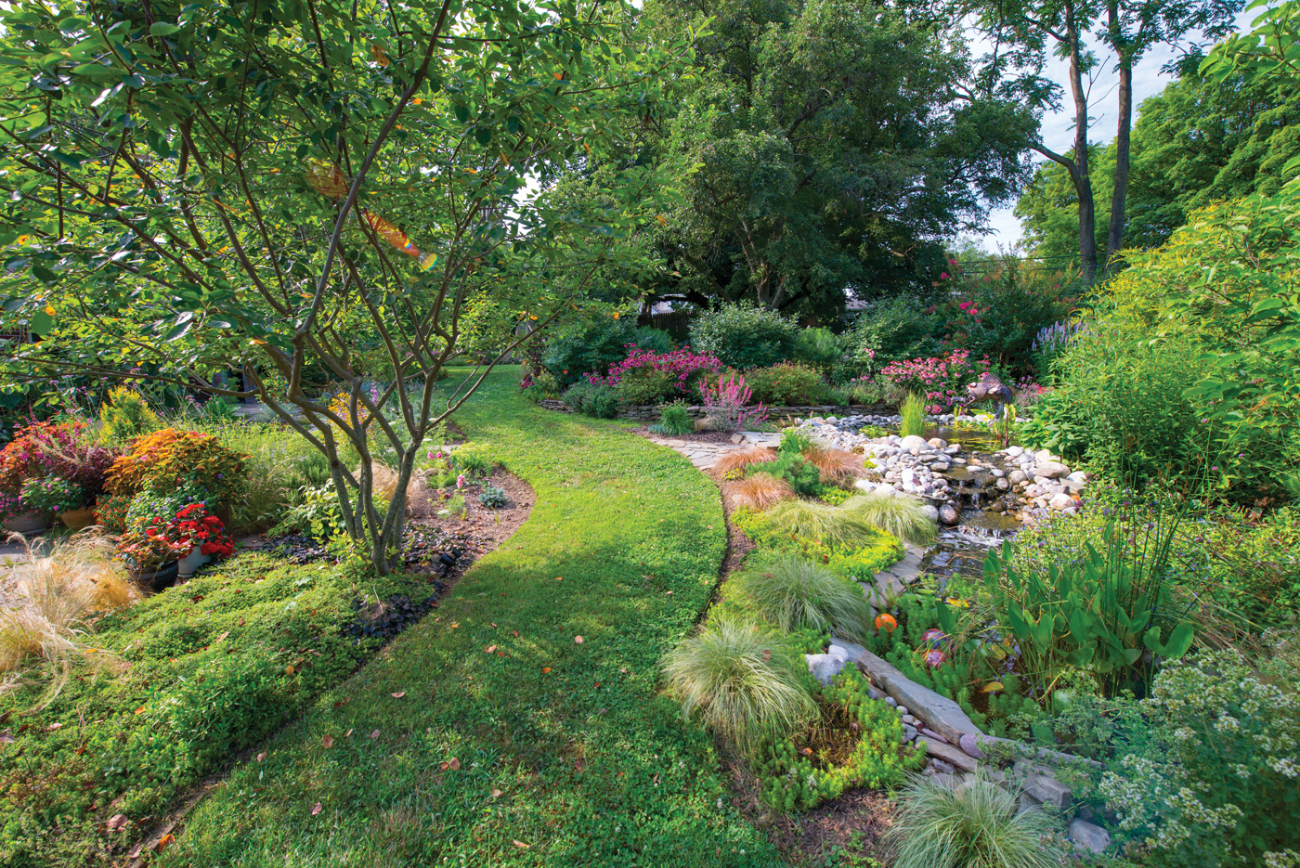
A carpet of lawn defined the backyard of the house Stacy Martin and Kevin Lehman purchased six years ago. Since then, the couple has added water features, gardens, a composting area and more to create an environmentally friendly backyard habitat. Stacy says that designing the backyard was“tricky,” as half of it is in sun and the other half is in shade during the day.
The neighborhood in which Stacy and Kevin live dates to the late ’50s and therefore boasts large lots. Other than a few trees and some overgrown shrubs, an expanse of lawn defined the couple’s yard. “Grass was pretty much it,” Stacy says of the landscaping. So, she went to work, creating meandering pathways, islands, gardens, water features, sitting areas and a composting area in an effort to transform the lot into a natural habitat.
Her methodology doesn’t employ grand measures – Stacy simply uses a garden hose or roping to create the outline of a bed and then, depending on the time of the year, smothers the grass by covering it with newspapers or cardboard. As for the artistic element, Kevin supplies that via his pottery, sculptures and glass creations.
Like most gardens, theirs is a work in progress. “I’m always doing something,” she says of her goal to reduce the scope of the lawn and replace it with beds filled with plants that attract birds, insects and pollinators such as bees and butterflies. Thus far, she’s probably eliminated 60% of the lawn. “I keep eyeing the front yard,” she admits. “I’d like to do more there.”
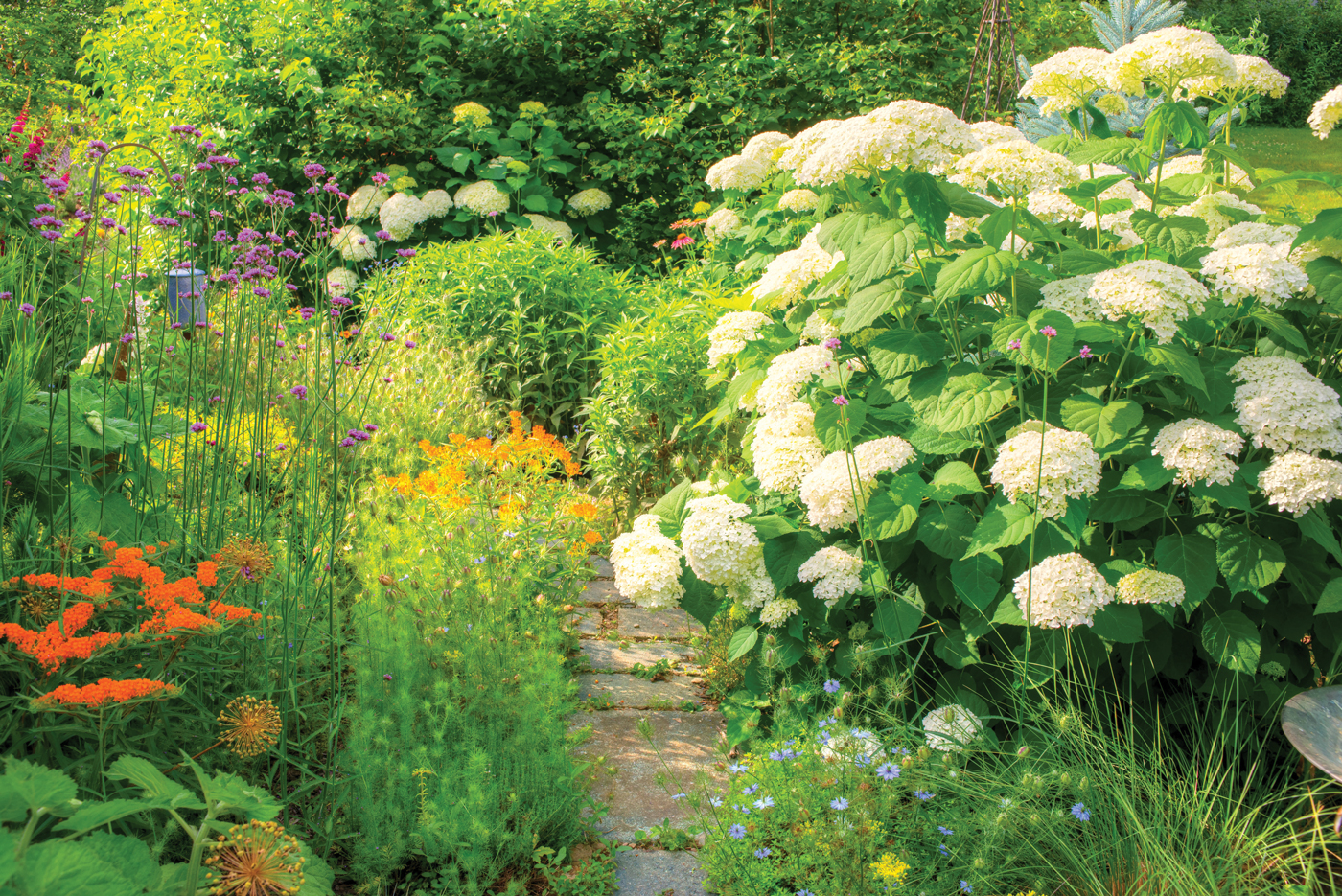
Annabelle hydrangea, verbena bonariensis, butterfly weed, love-in-a-mist and other perennials define this garden.
It’s In the Genes
Stacy and Kevin both grew up in the New Holland area. “We’ve been together since the seventh grade,” she notes. Stacy credits her grandmother and great-grandmother for her interest in gardening. She remembers that the gardens at their homes in New Holland were meticulously maintained and bloomed with color from spring to fall. Stacy’s payment for helping them with gardening chores came in the form of plants. “I’d take them home and create flower beds,” she says of beautifying the yard at her family’s house in East Earl.
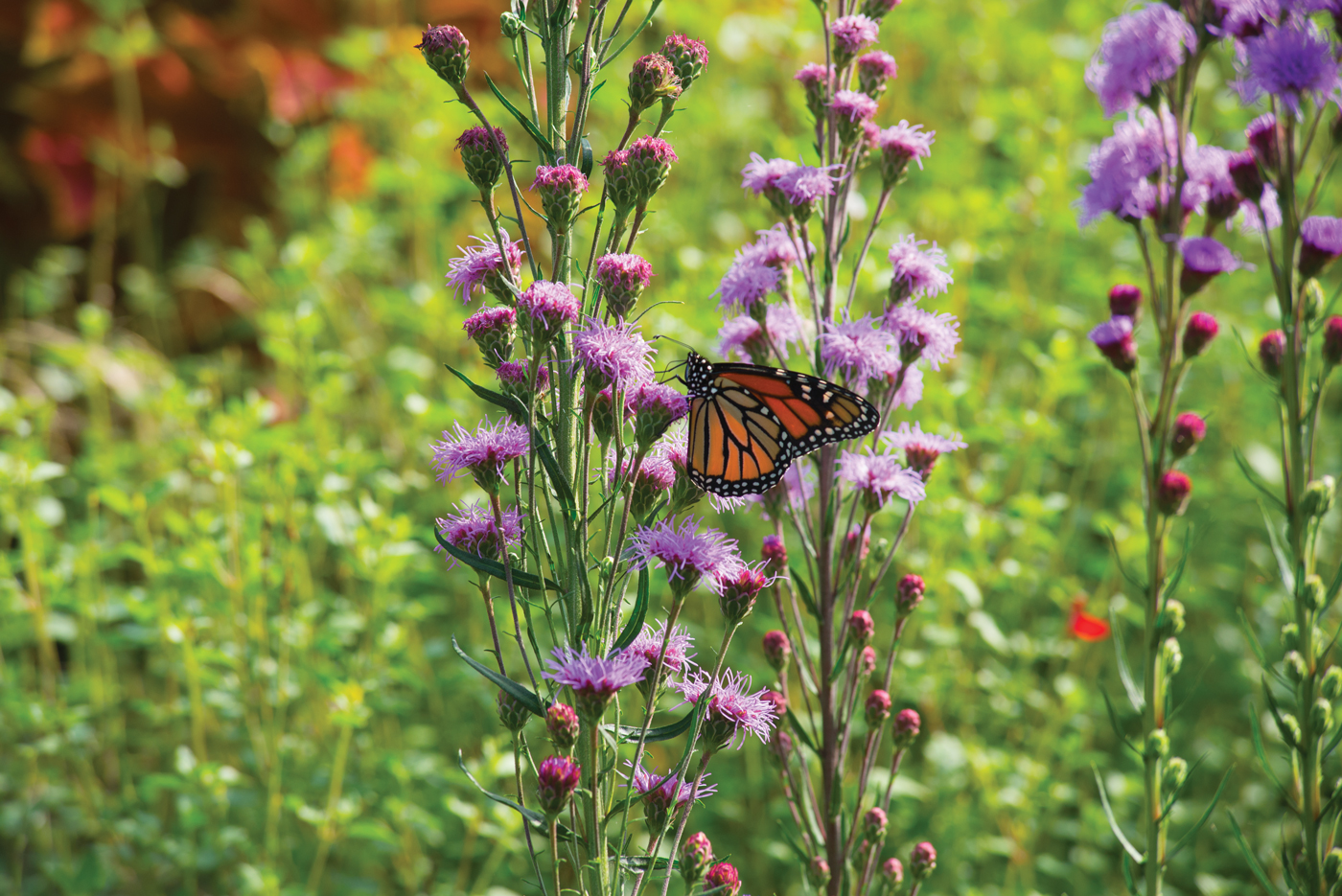
Stacy concentrates on including plants – such as liatris – that benefit pollinators. “The monarchs are constantly on them,” she says.
Some of those plants have followed Stacy on her travels. “I have daffodils from my grandma’s garden,” she notes. She also remembers that her grandmother never complained about having to wash dishes. “She loved to look out the kitchen window and take in her garden,” Stacy recalls. She ventures a guess that the window over the kitchen sink is partly what attracted her to the house she and Kevin bought, as it provides a panoramic view of the backyard. “I often think about my grandmother when I’m working in my garden or doing something at the kitchen sink,” she shares.
Life’s Work
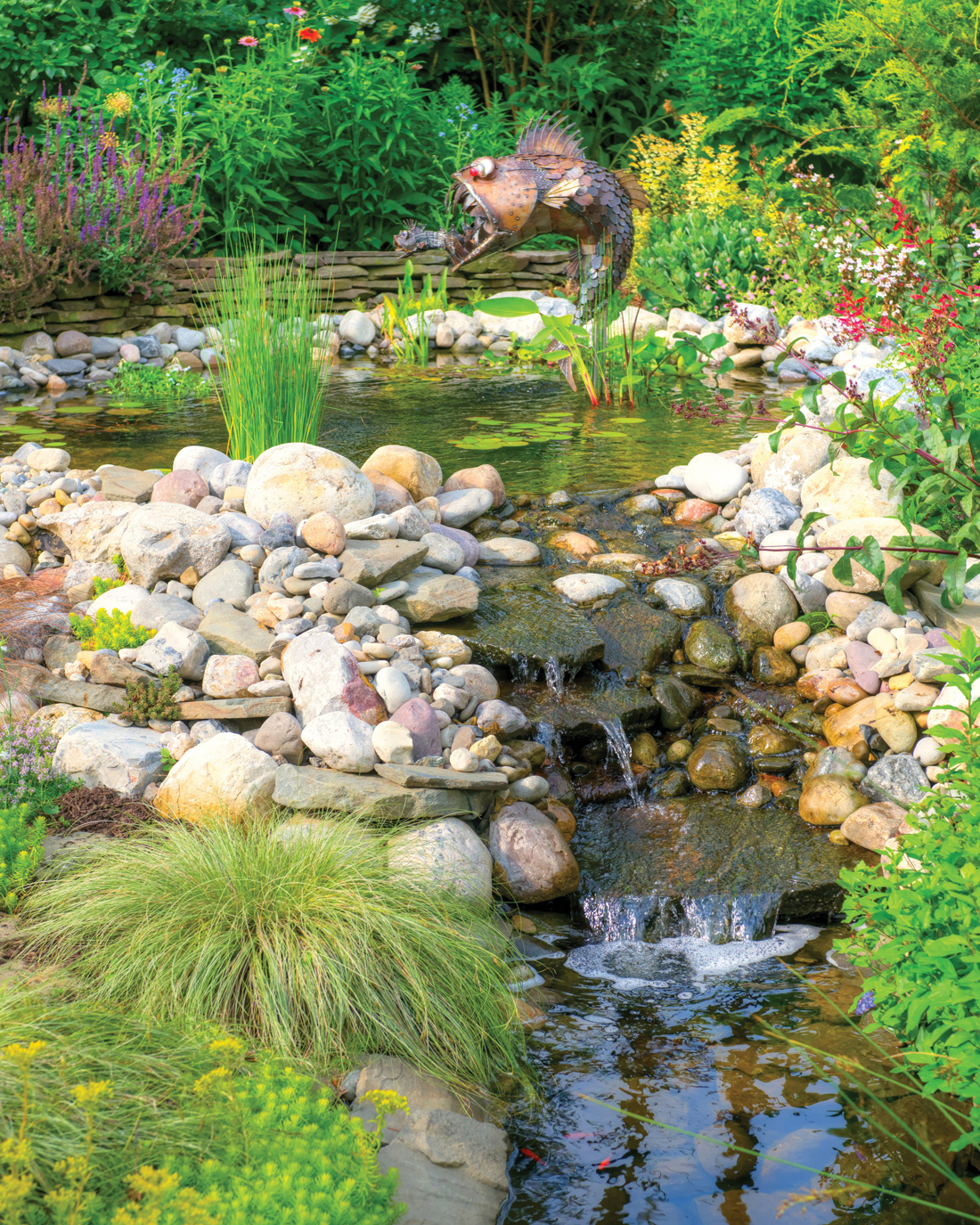
The pond started out small but has grown over the years. The primal-fish sculpture was created by John Morrow.
Stacy’s early introduction to the world of gardening created the foundation for a career. She is a graduate of Gettysburg College and earned her master’s degree in agronomy – with a focus on plant breeding and genetics – from the University of Nebraska. She launched her career with Green Leaf Plants, which is a division of Aris Horticulture and is located in the Bird-in-Hand area. Green Leaf provided Stacy with the opportunity to travel to such destinations as Colombia, South America, which ranks second in the world as an exporter of cut flowers. “I went there five or six times to help start perennial programs,” she explains, noting that the goal was to develop “juicy colors.” Similar trips took her to Guatemala.
Her next career stop was DuPont Pioneer, which produces seeds for agricultural purposes. That experience prompted her to pursue her master’s degree. “It was like they were speaking a foreign language,” she says of the expertise her colleagues possessed.
Working for DuPont Pioneer initiated a move to Elkton, Maryland, which provided Stacy with evidence that there’s nowhere quite like Lancaster County, where gardening is concerned. “Grass right up to the houses,” she says of her neighbors’ idea of “landscaping.”
Stacy, on the other hand, surrounded her home with gardens. In the front yard, she created a cottage garden that was enclosed by the proverbial white picket fence. “People thought it was some kind of park!” she recalls, saying that she’d arrive home to find strangers “touring” the property and even helping themselves to flowers. Cars would drive by slowly to take in the sights. Someone informed her that her garden was featured on the cover of a calendar, which came as news to her. “It was crazy!” she says of the attention her garden attracted.
Missing Lancaster County, Stacy moved home after being away for 10 years. She indulged in her love of horticulture by creating gardens behind the Lancaster Creative Factory on South Prince Street, which Kevin founded and directs.
Stacy also became employed by Seedway, which is located in Mifflinburg, Union County. Founded in 1923, the company specializes in providing farmers with high-performing seed products. It also distributes lawn and turf products. Seedway, which has been a subsidiary of GROWMARK since 2002, is regarded as one of the few remaining companies of its kind in the country. Stacy specializes in corn and soybean products for the southern region of the United States. In that capacity, she frequently takes “field trips” to southern states.
Throughout her career, she has taken advantage of opportunities to attend trade shows, trial events and seminars. “The bottom line is you leave with lots of free plants!” Stacy says of a perk of her job.
Garden Strategy
Stacy’s strategy to eliminate wide swaths of lawn echoes the philosophy of University of Delaware entomology professor, Doug Tallamy, who is also a respected author (Bringing Nature Home) and has been profiled by many magazines and newspapers. He theorizes that if every homeowner would create natural habitats in their backyard – he calls them Homegrown National Parks – the world would be a better place. He points to the plight of birds, monarch butterflies and honeybees, sharing with Science magazine (2019) that bird populations have declined by almost 33% since the early 1970s. He theorizes that with 130 million parcels of residential land existing in the United States, property owners could create an interconnected system of nature-friendly habitats that would benefit the environment.
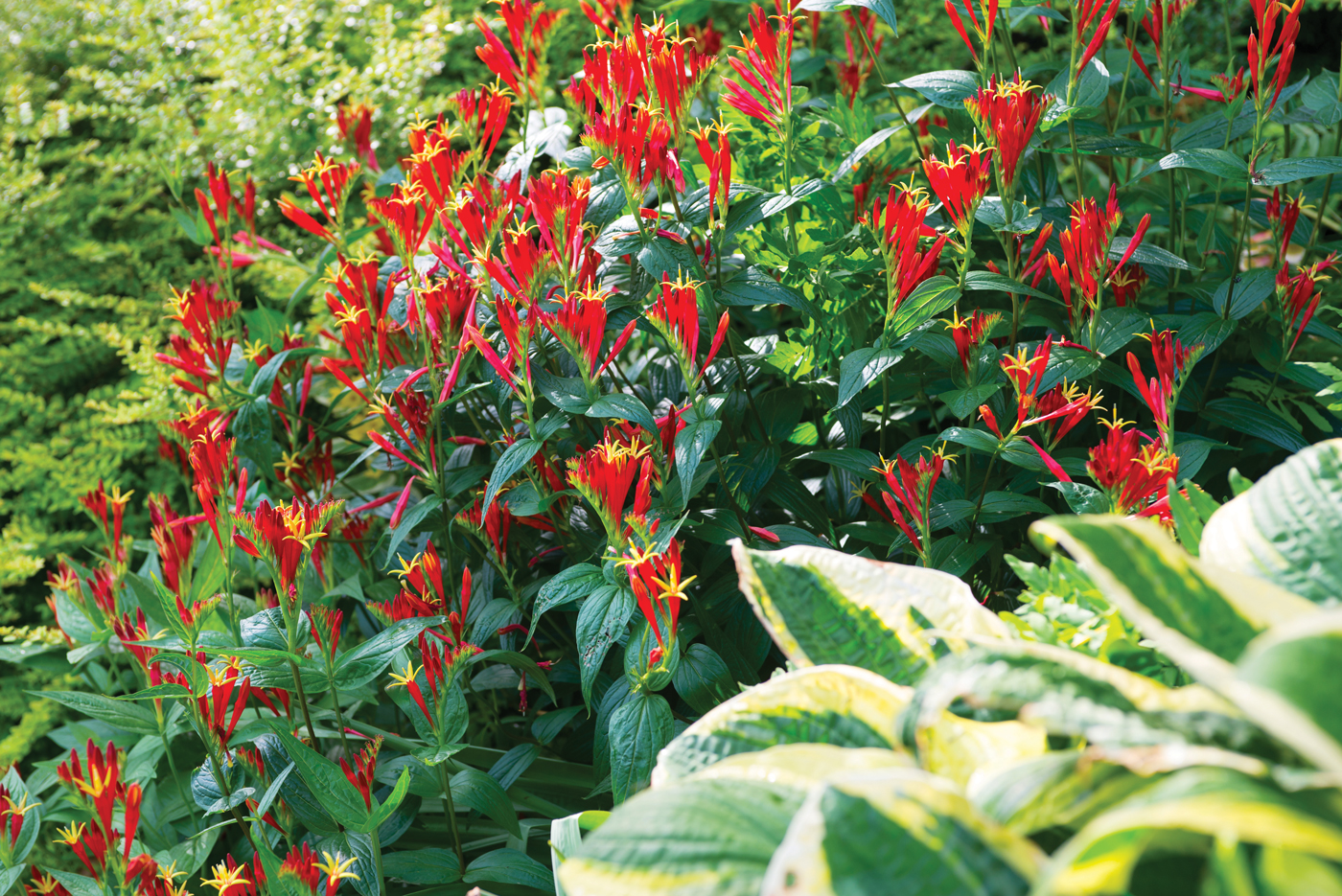
The native plant, Indian pink, with its contrasting colors of red and yellow, is one of Stacy’s favorite shade plants.
Tallamy leads by example, having taken a 10-acre farmette in southeastern Pennsylvania and transformed its hay fields into a bio-diverse “park” that is planted primarily with native plants and trees that he maintains better support native birds, insects and pollinators than do the exotic ornamentals that have become favorites in the landscape over the last 50 years.
He also admits that by living in the middle of nowhere and not having to deal with neighbors and homeowner associations, he is free to practice his style of gardening. He noted in an article written by Adrian Higgins of The Washington Post that when he first moved to the property, he rarely saw birds, insects, pollinators and other wildlife. That has changed; to date, he has identified 55 different bird species, as well as 905 species of moths.
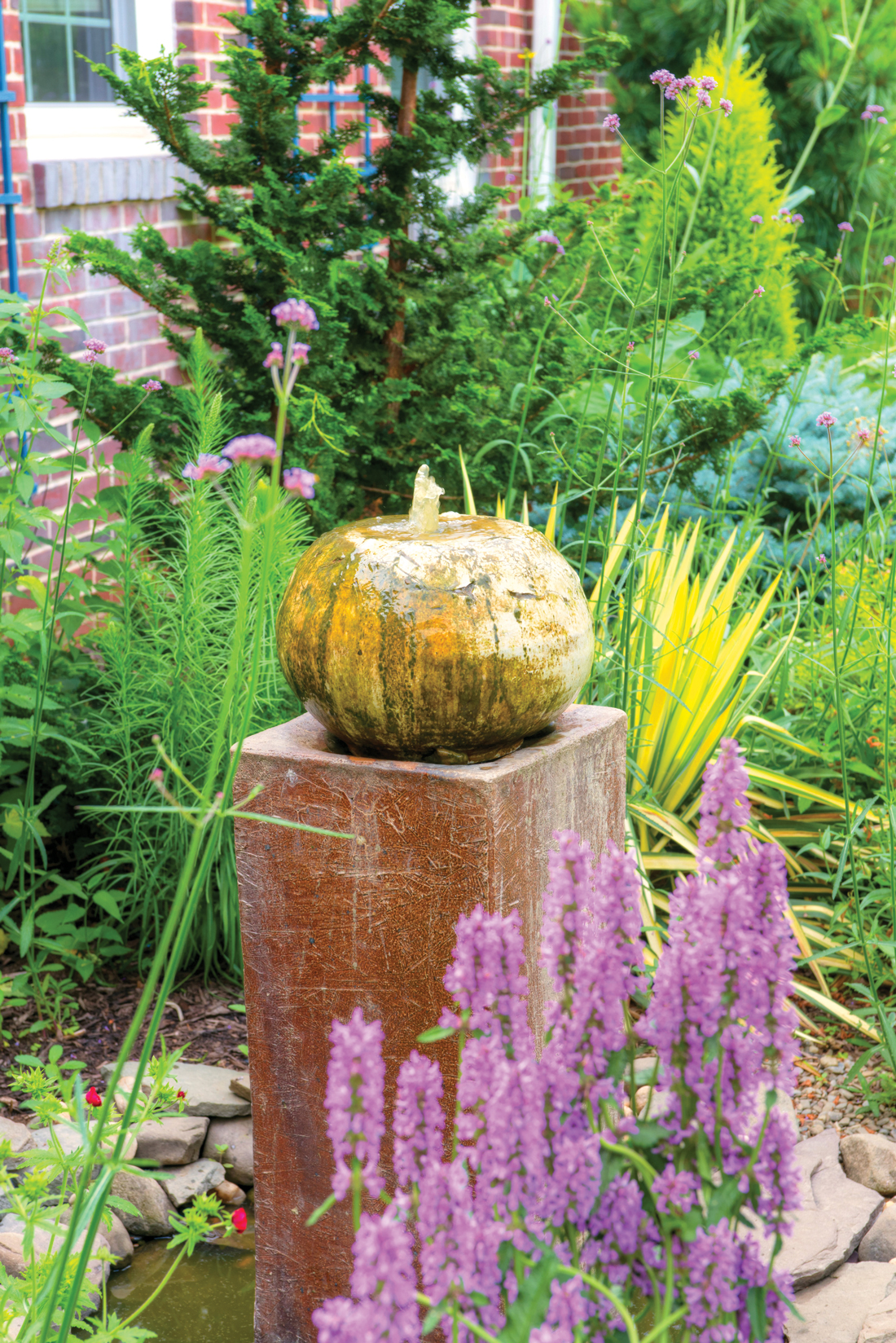
Phil Kreider created the fountain, while Kevin crafted the base for this water feature. It’s surrounded by hummelo (foreground), yucca and verbena bonariensis (tall purple plants), which self-seeds.
Stacy thoroughly agrees with Tallamy’s philosophy, saying if everyone would create even the simplest of habitats, nature would benefit.
One thing that immediately stands out at Stacy and Kevin’s home is the fact that the garden is a kaleidoscope of color. The pop of color begins at the front door, which is painted a color called Flamenco Pink. “I had to work with the color tones in the stone and siding,” she explains. “I always bounce ideas off my mom, who is good with color – I can always count on her to reign me in!” Then, another shock of color – orange – materialized when Stacy added a few butterfly-weed plants along the walkway. In the fall, she harvested the seed-filled pods and scattered them in the bed she had enlarged.
The juxtaposition of the two neon-like colors somehow works. As is often noted, any color or combination of colors seem to look natural in the great outdoors. Another bed filled with a variety of flowers and plants fills a sloped area of the front yard.

Stacy’s aesthetic has shifted to a fondness for using contrasting colors. Here, the Flamenco Pink door color contrasts with vivid-orange butterfly weed that reaches peak bloom in late June.
Stacy became a convert to utilizing the front yard for gardens as a result of taking a trip to England following college graduation and embarking on garden tours. “There was very little lawn left at my house in Maryland,” she notes. Still, she was always nervous about “making waves” wherever she lived but became a little bolder upon meeting Fergus Garrett, who is a protégé of author and gardening extraordinaire, Christopher Lloyd, and succeeded him as the head gardener at Great Dixter, which is a historic house and garden museum in East Sussex that was restored by Lloyd’s father.
Stacy met Garrett when he made an appearance at Terrain in Glen Mills several years ago and loved the fact that he questioned Americans’ reluctance to fill their front yards with gardens. “I told him what I was planning to do and, sensing I was asking for his permission, he told me to ‘Just do it,’” she relays of their conversation.
She is also a huge fan of the English television series, Gardeners’ World, which is hosted by horticulturist and writer, Monty Don. “That show opens your eyes to new ideas,” she says. Stacy also names the public garden, Chanticleer, in Wayne, Delaware County, as a source of inspiration.

Kevin Lehman and Stacy Martin take a break from their spring gardening chores. Photo courtesy of Stacy Martin.
Stacy goes outdoors as soon as the weather cooperates. If it’s a tolerable day in February, she is outside cleaning up beds, checking on things in the greenhouse and making plans for the coming season. Fall 2021 was devoted to creating a stone-lined path that leads to a new patio outside the greenhouse.
As for the floral display, Stacy employs a combination of annuals and perennials to ensure colorful blooms from spring through late fall. “I’ve gravitated to a palette of opposite colors,” she says. The landscape is also filled with several varieties of hydrangea, as well as native shrubs. Containers are filled with a combination of annuals, perennials and tropicals. While she mulches every year, Stacy does not treat the lawn. “It doesn’t have to look perfect,” she says.
• Hellebores (March)
• Daffodils (April)
• Tulips (May)
• Allium (May-June)
• Foxglove (June)
• Penstemon (June-mid-July)
• Annuals (July-late summer)
• Coneflowers (July-late summer)
• Hosta (bloom time varies June-August)
• Black-eyed Susan (July-early fall)
• Joe-Pye Weed (August-early September)
• Grasses (fall season)

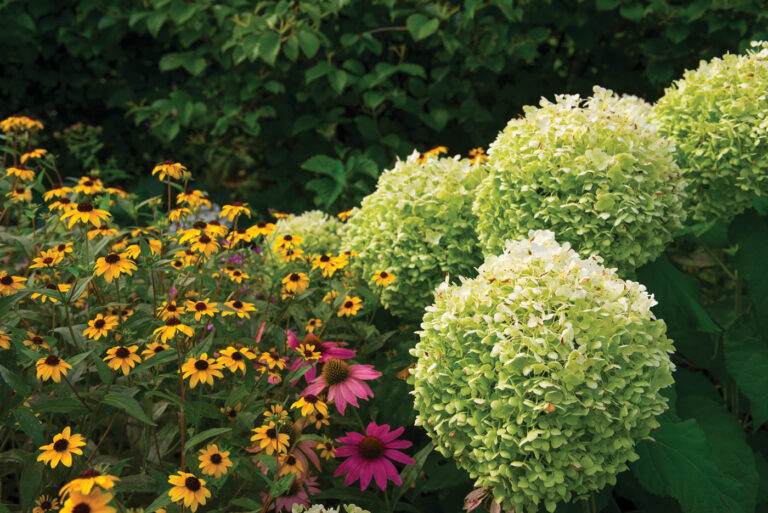
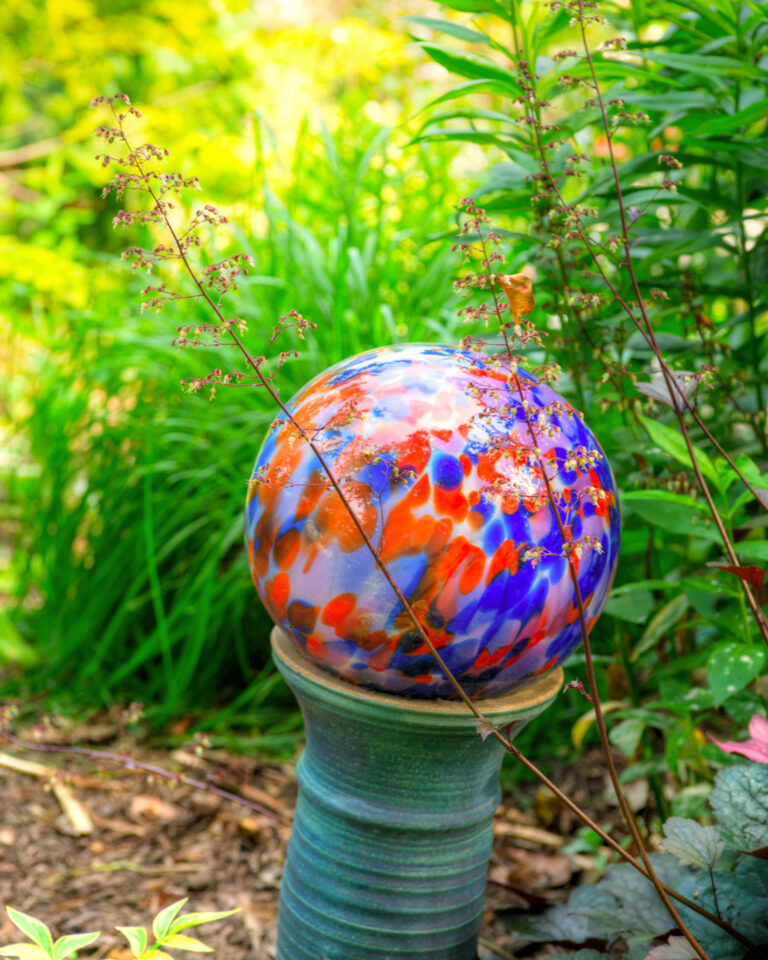
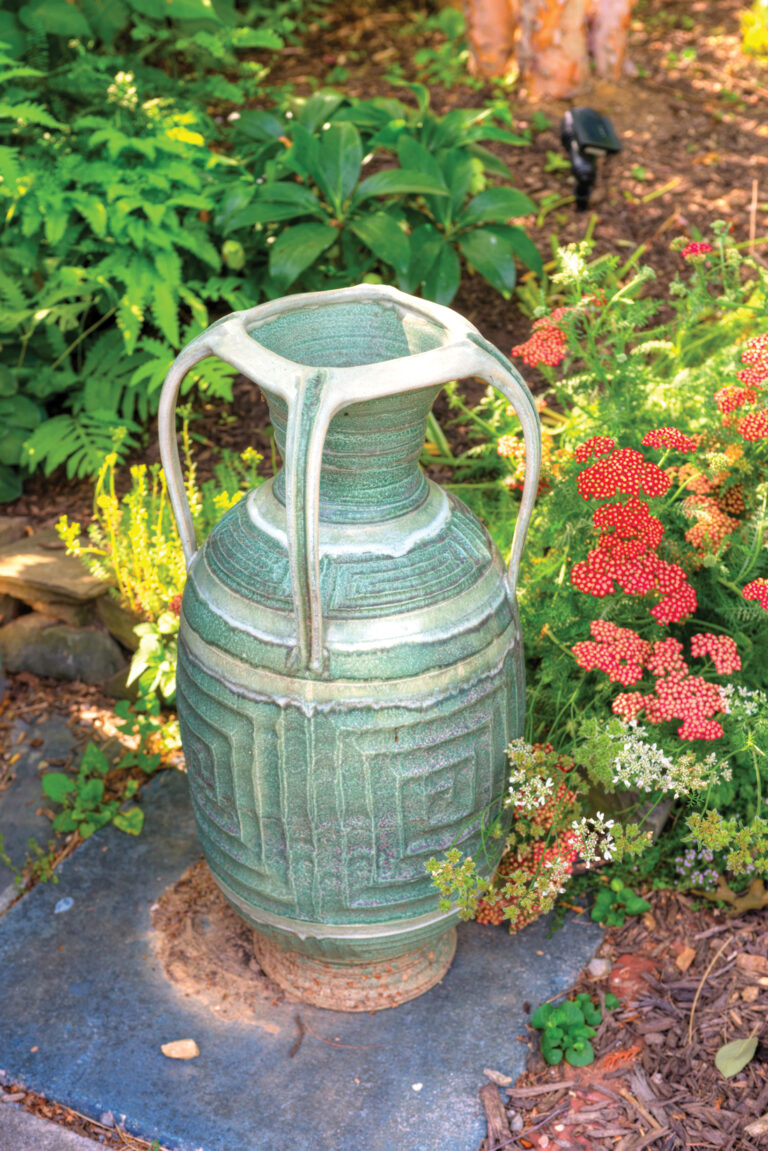
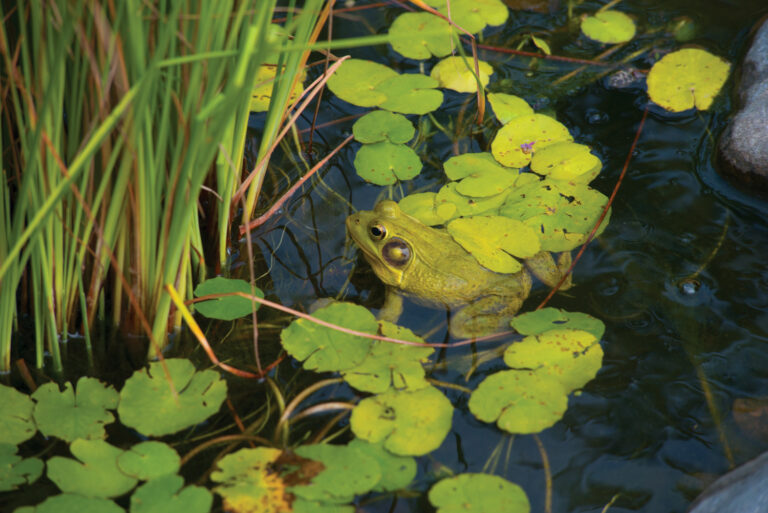
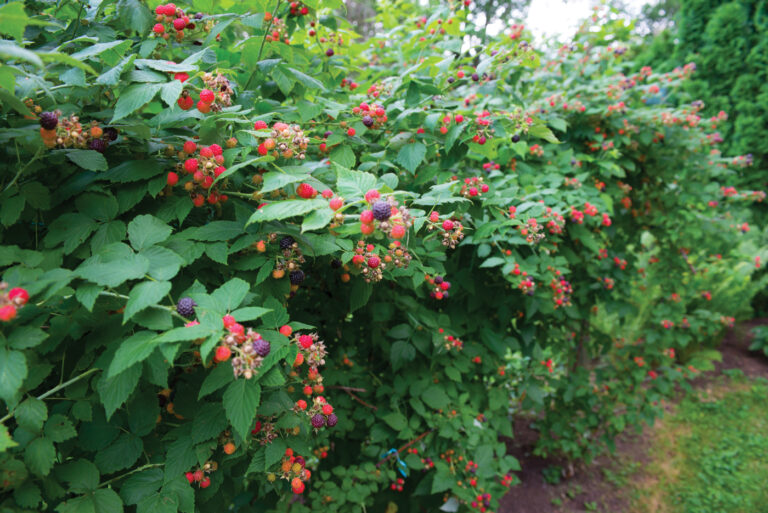
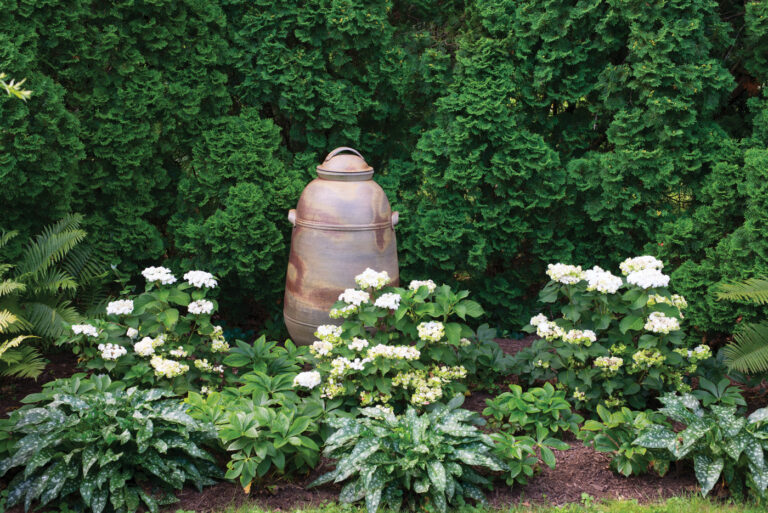
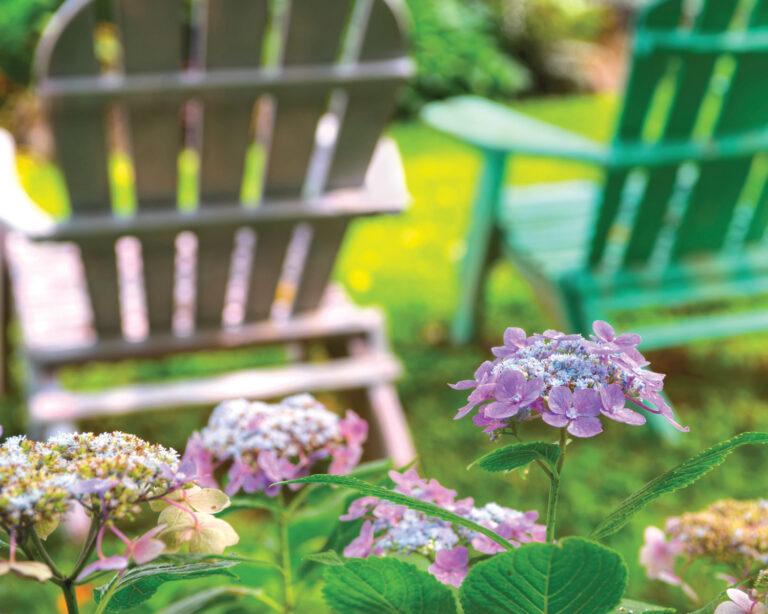
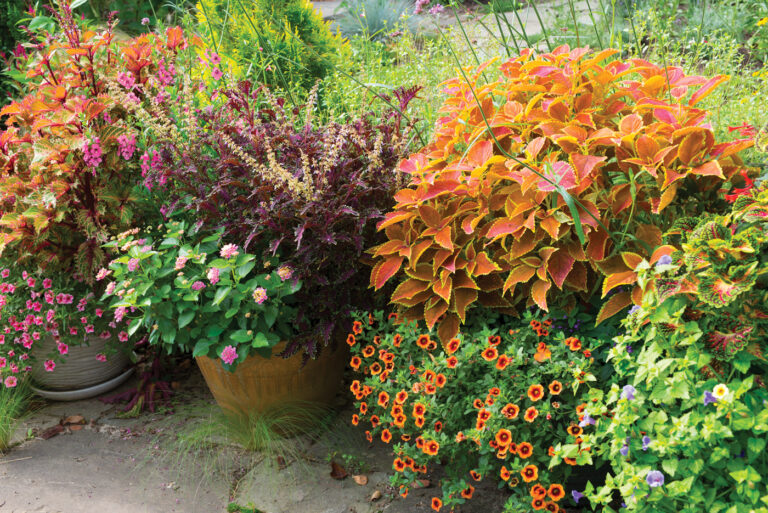
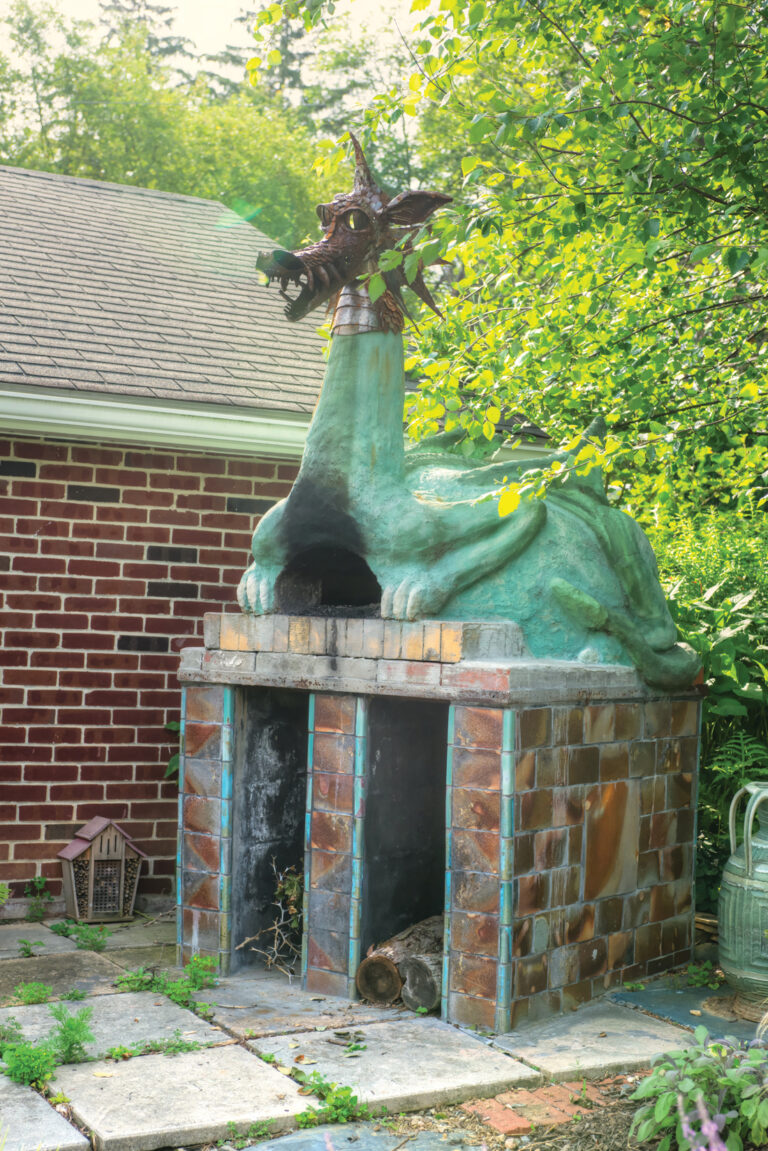
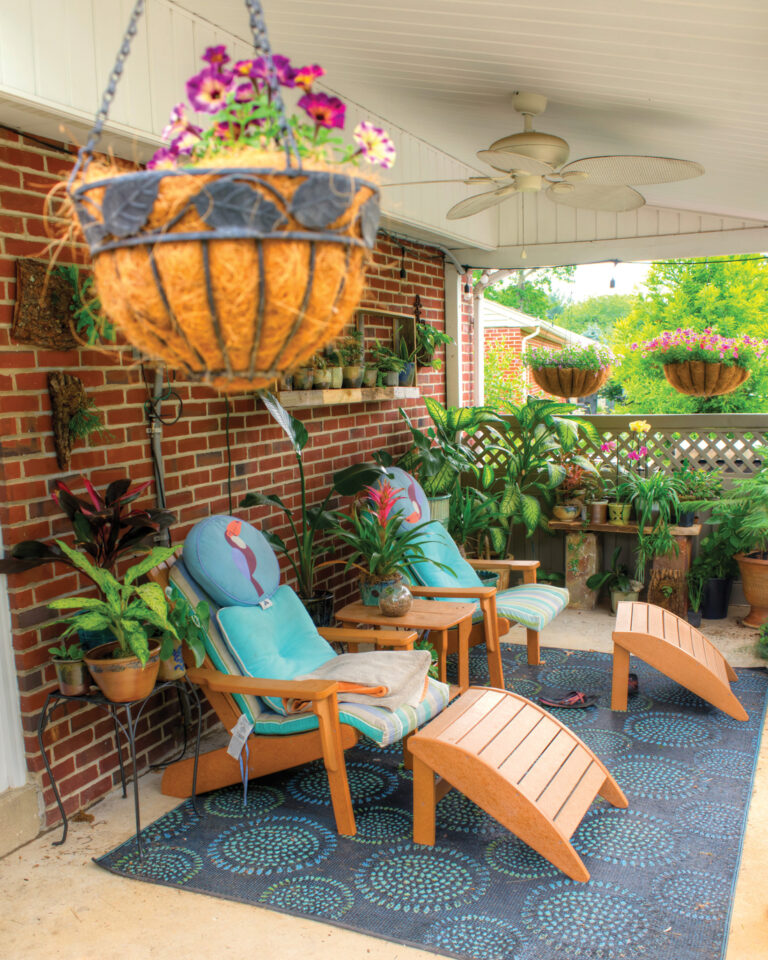
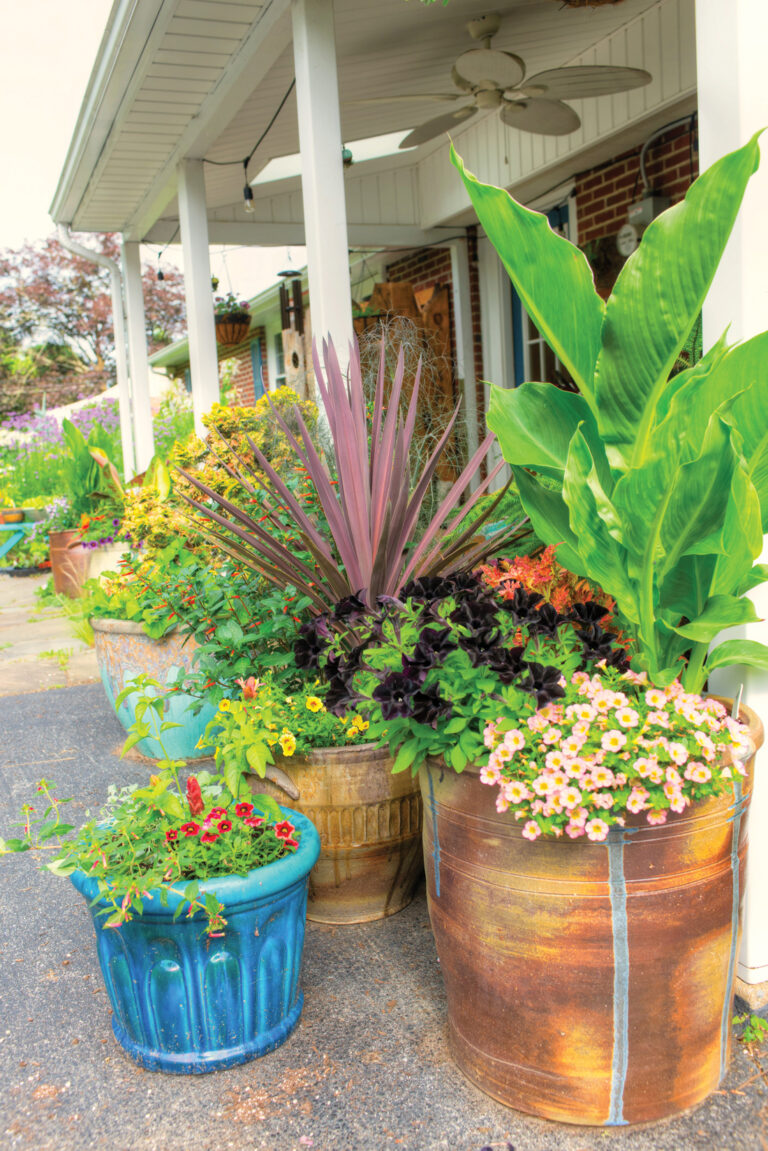
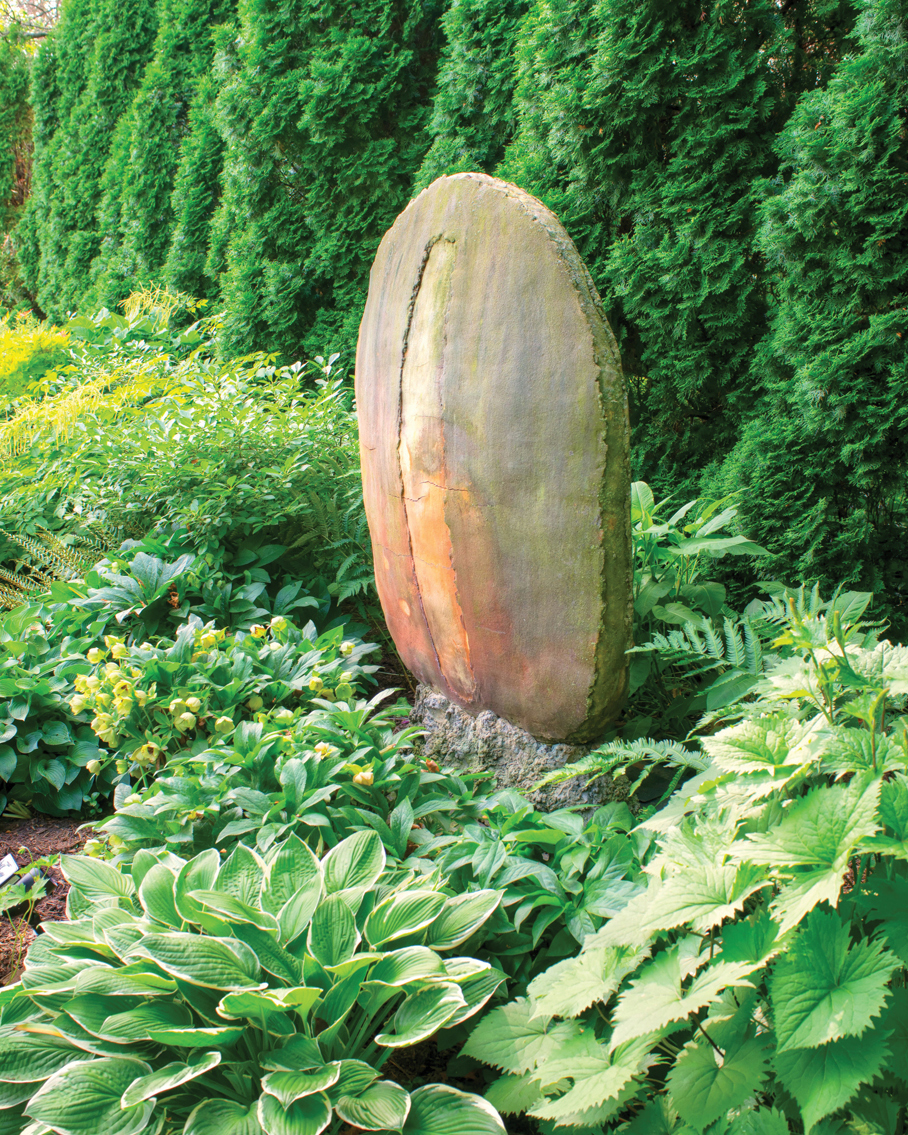
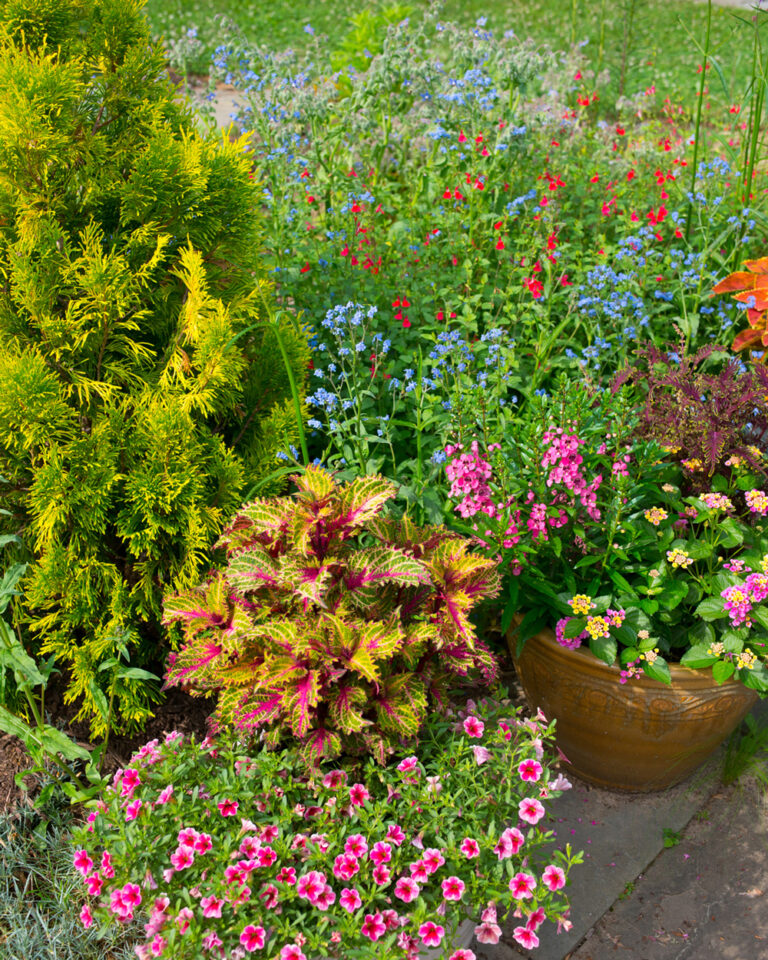
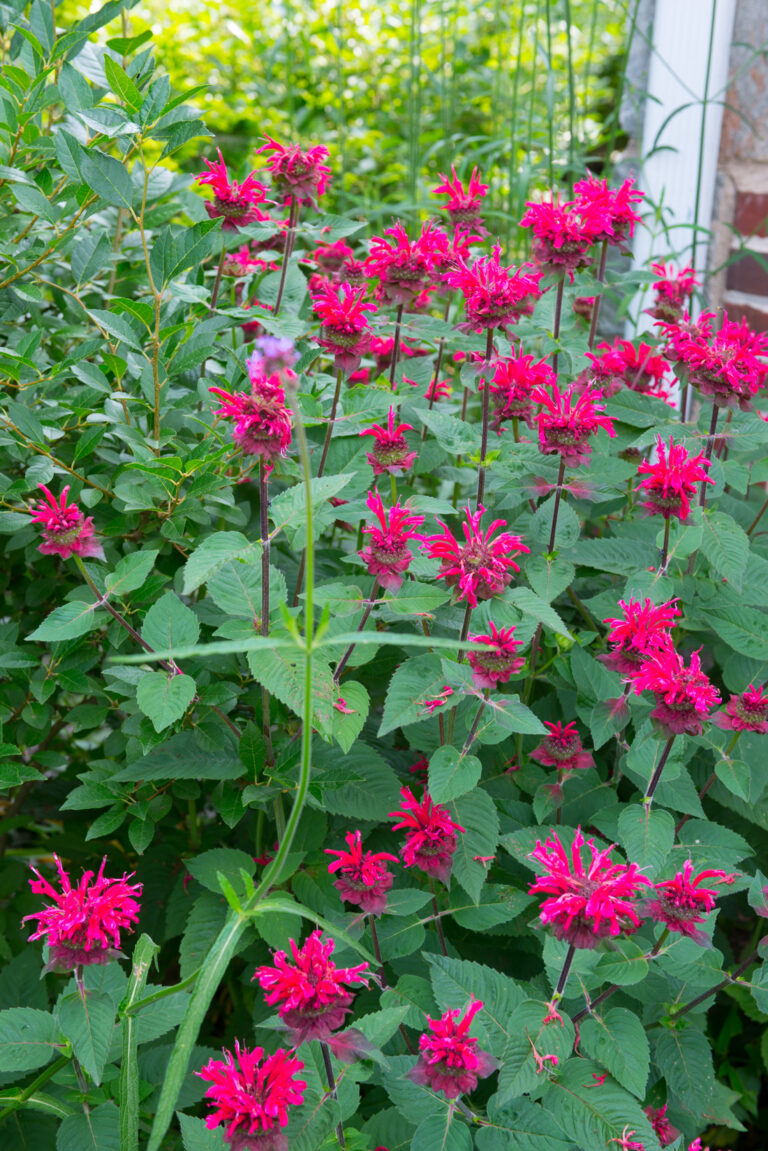
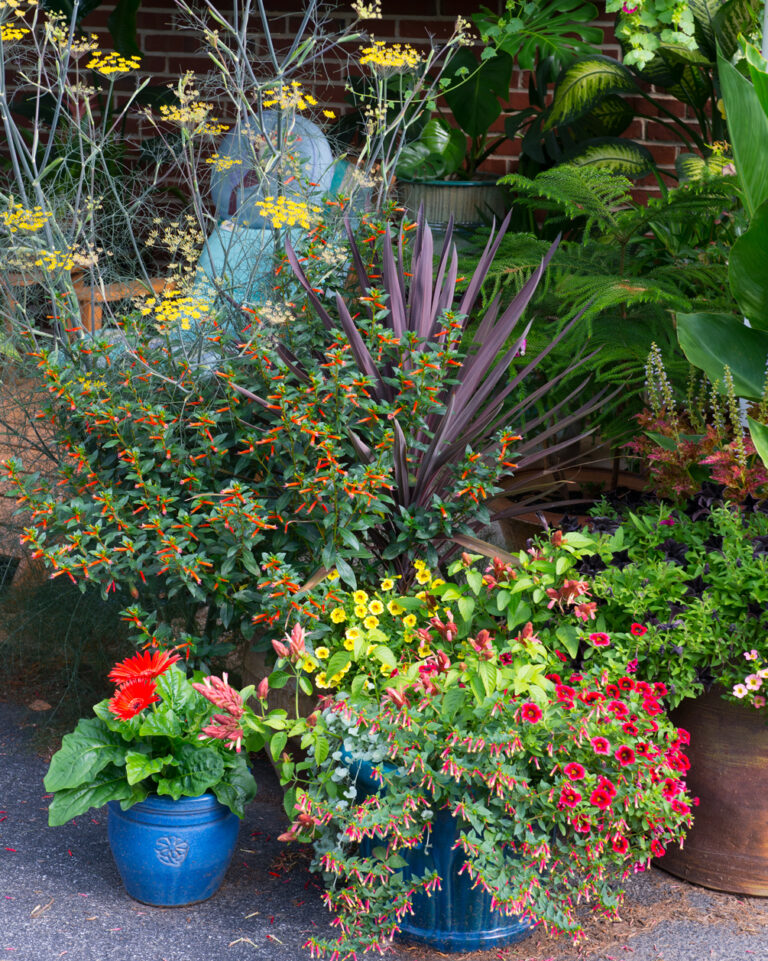
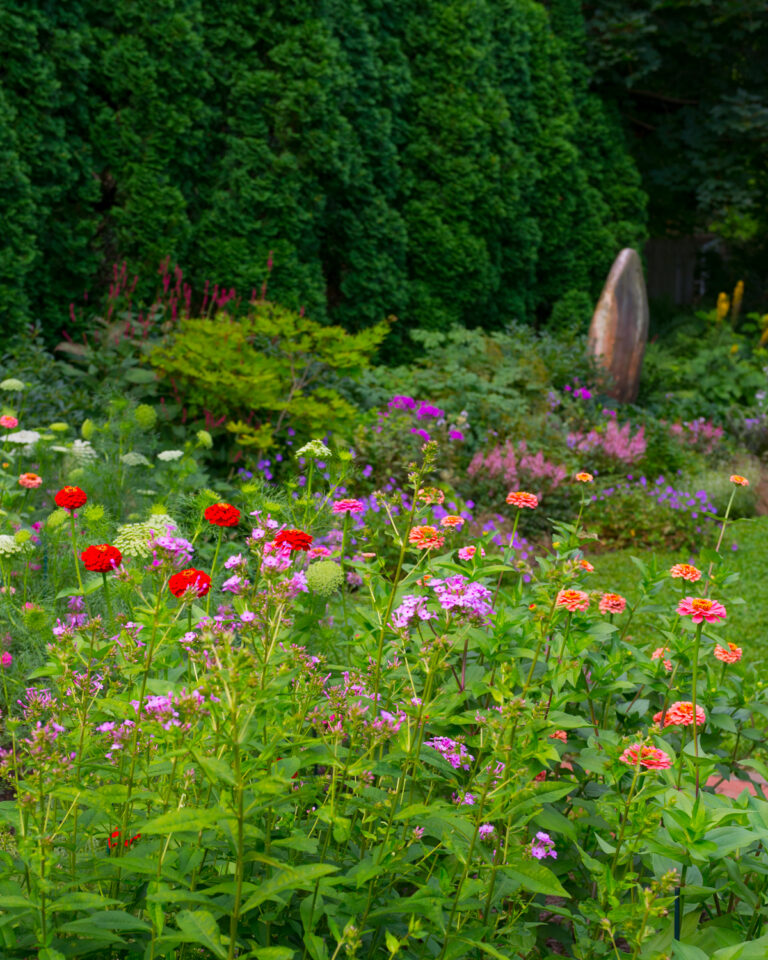
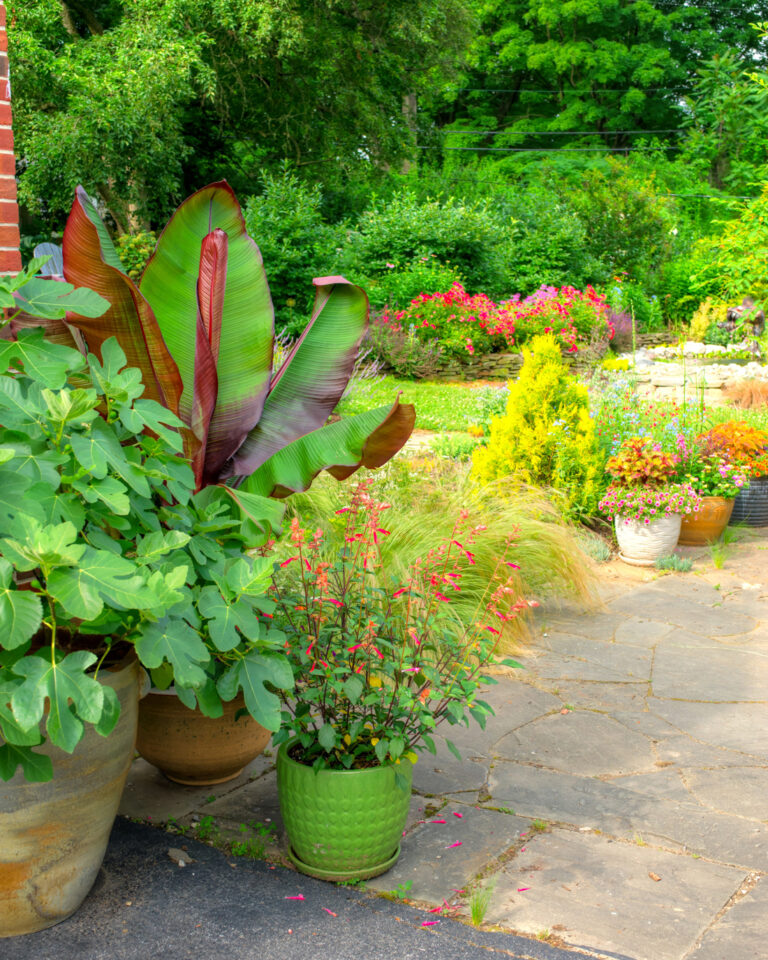
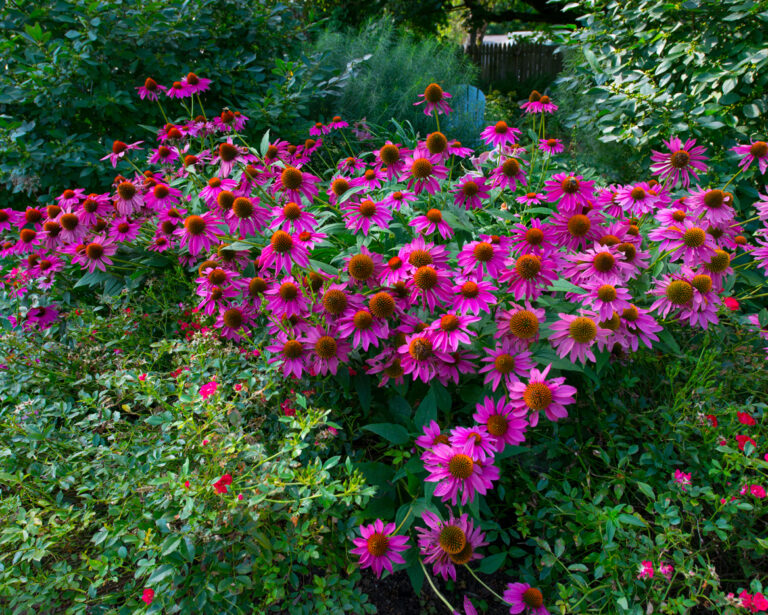
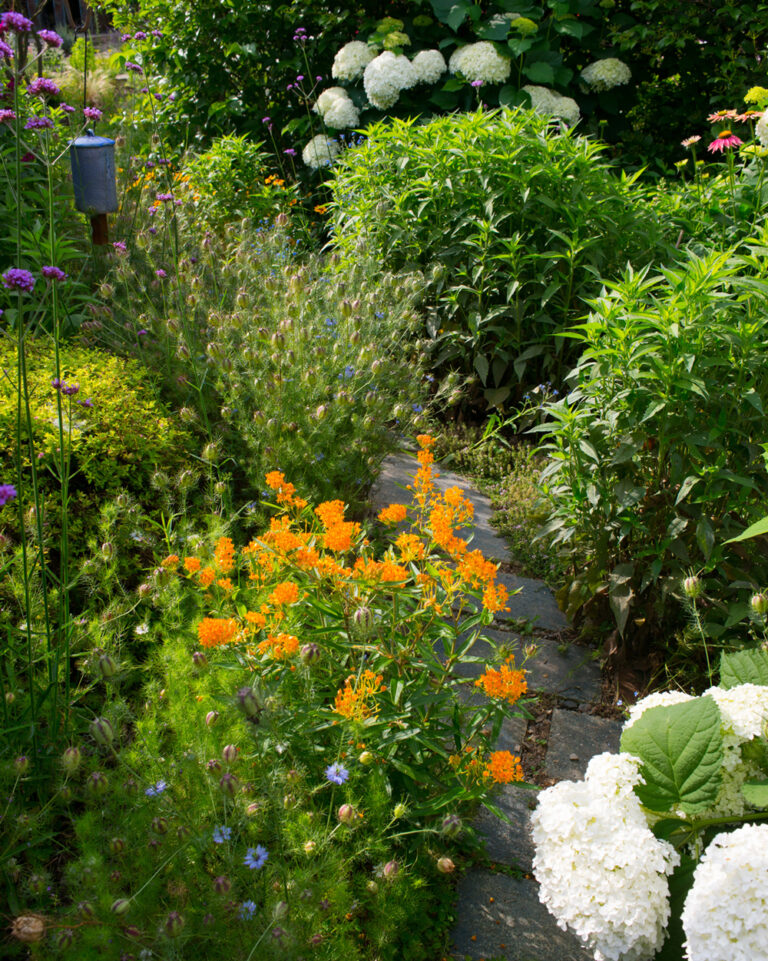
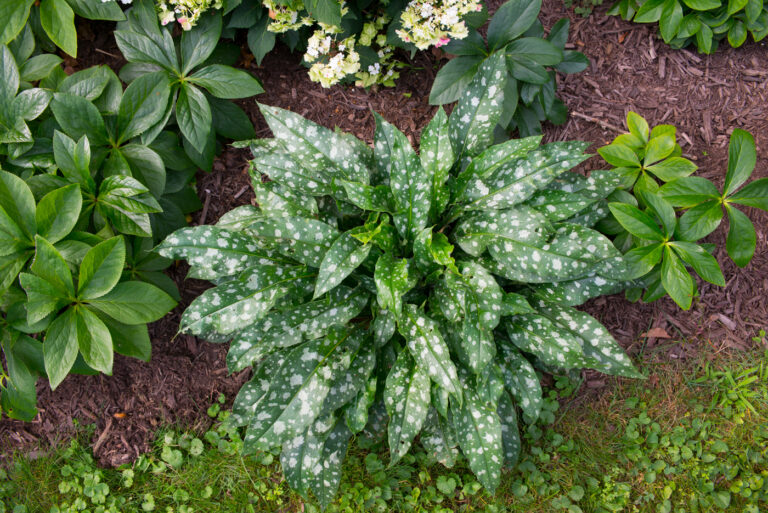
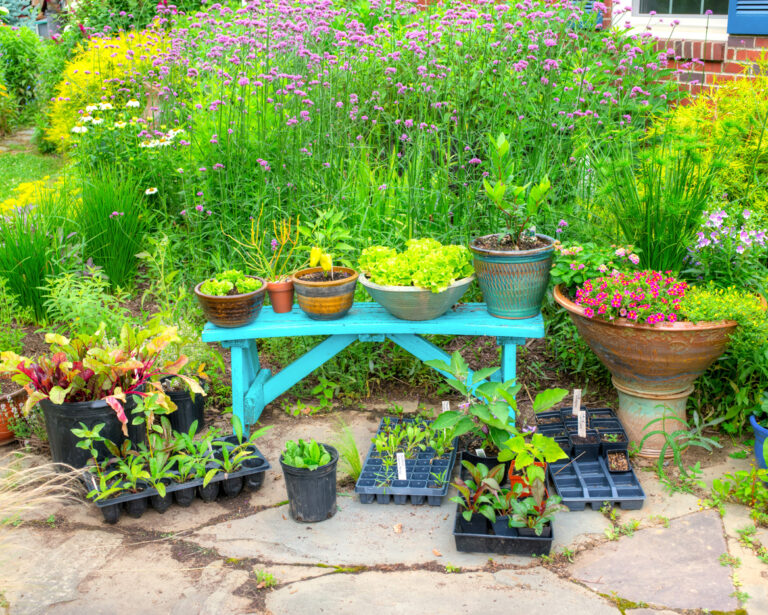
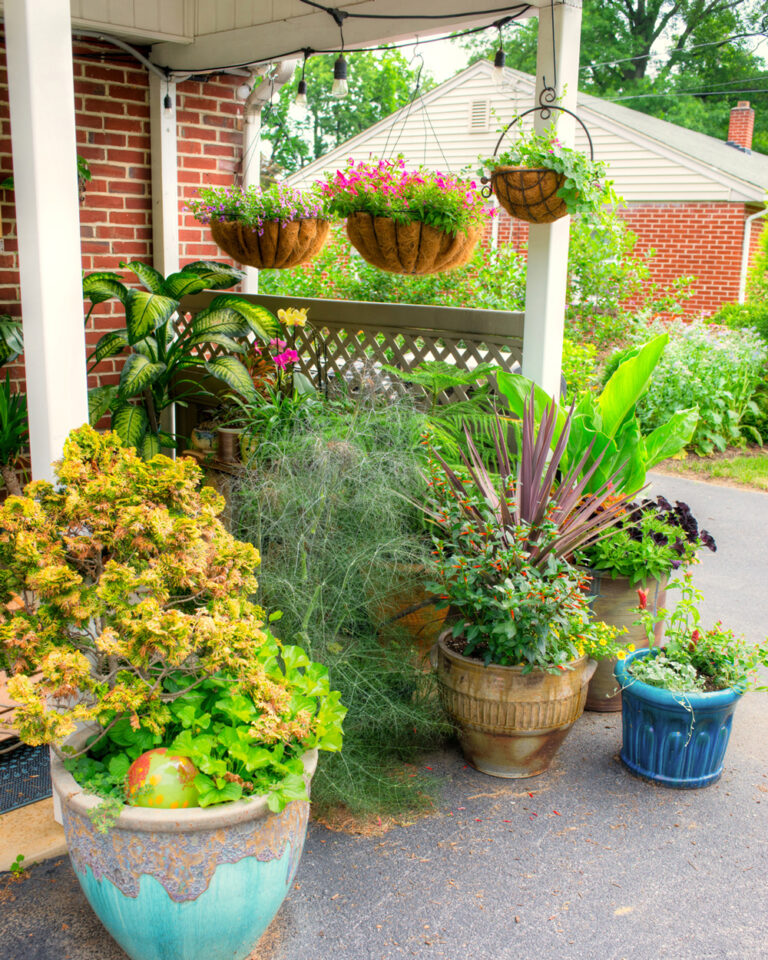
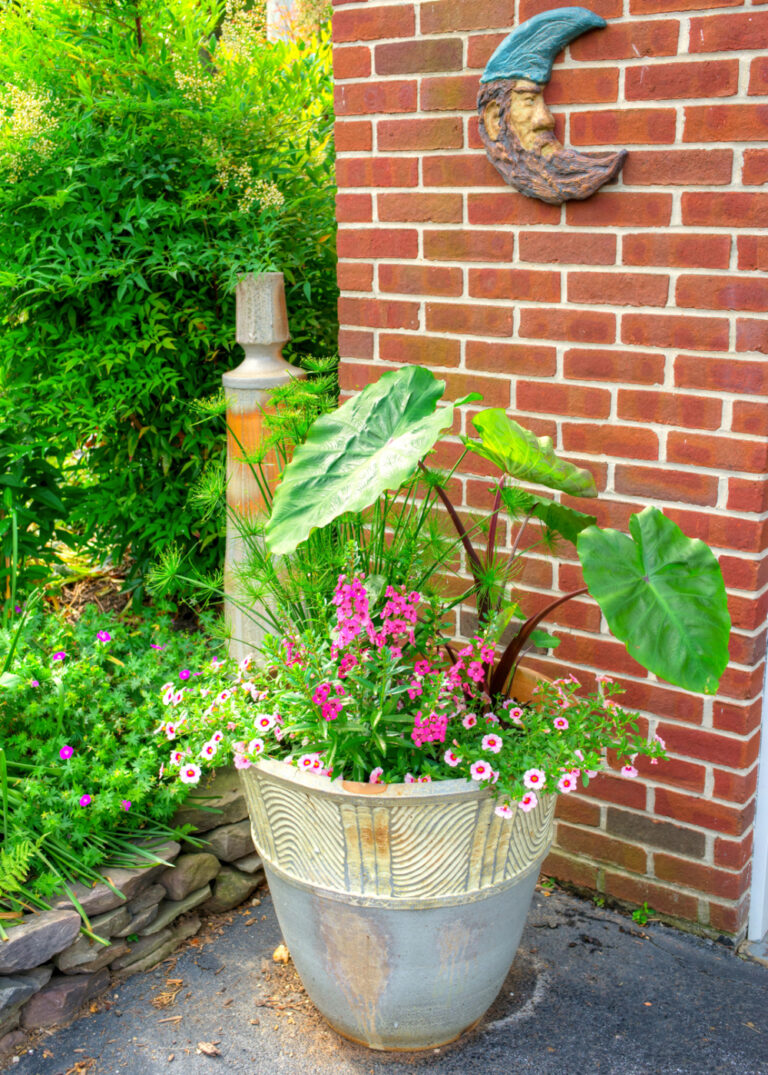
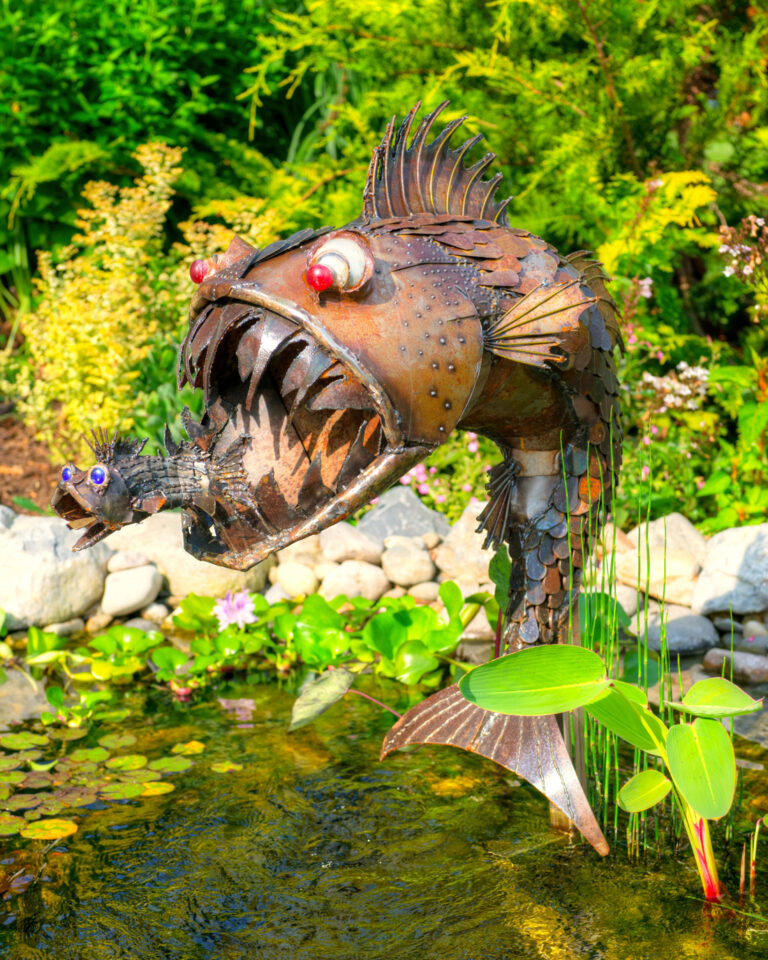
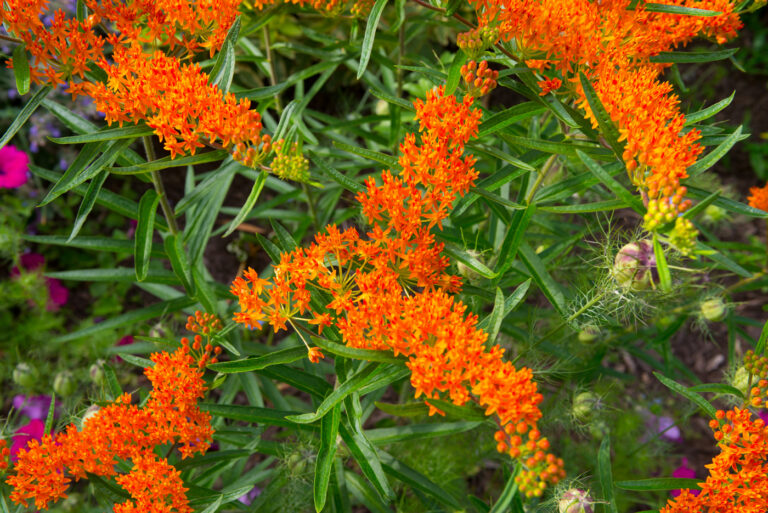
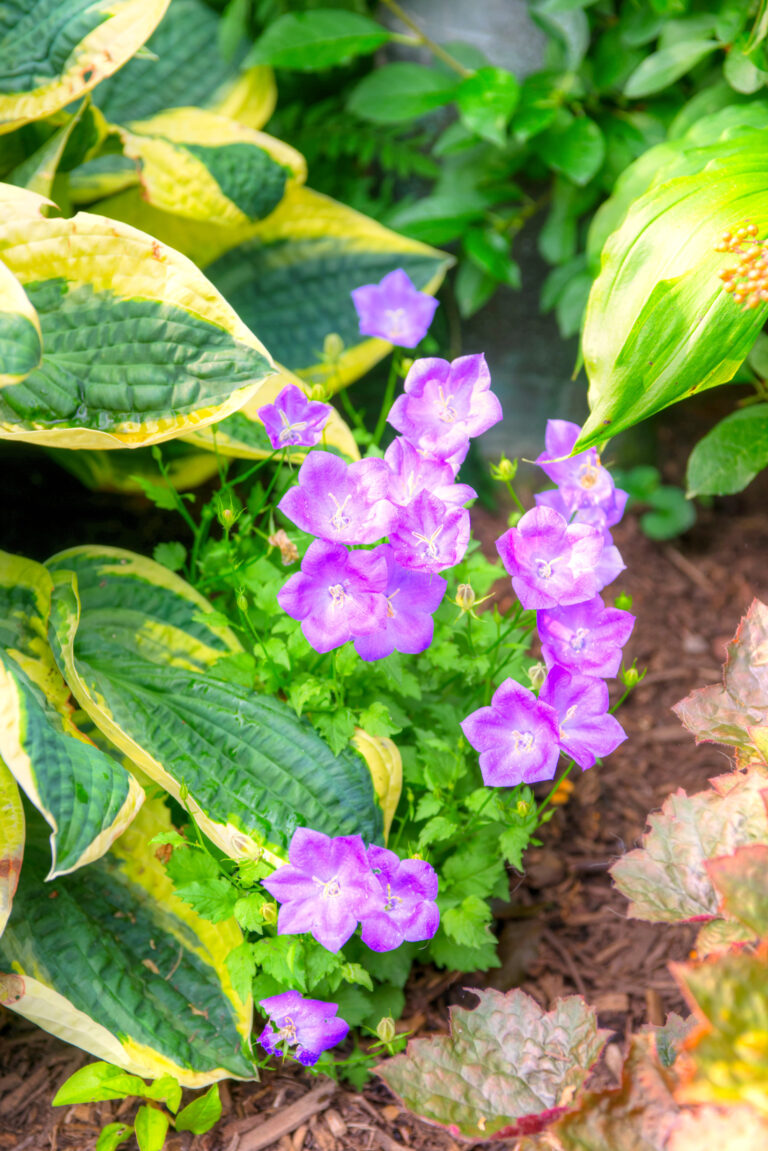
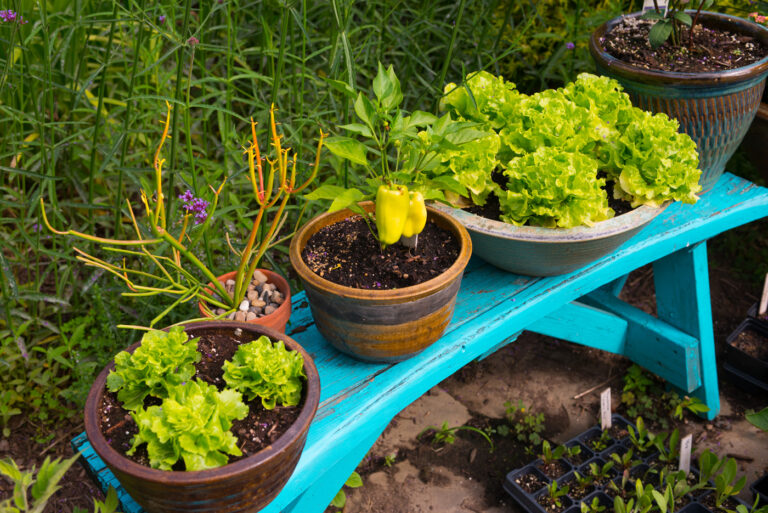
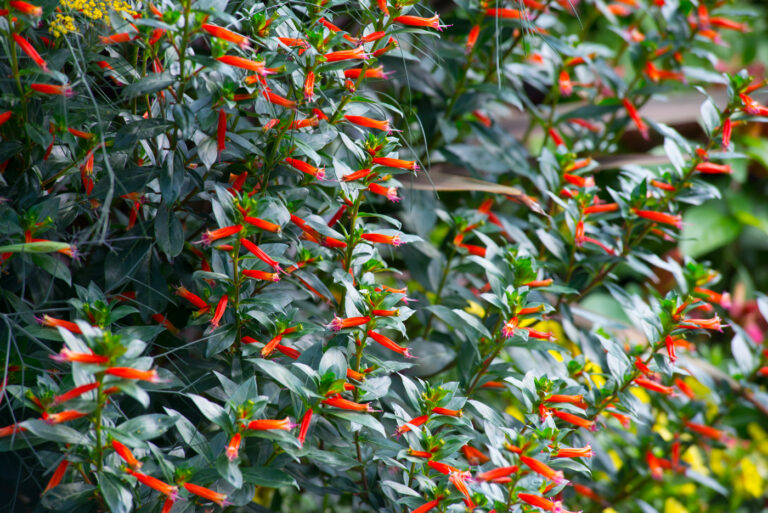
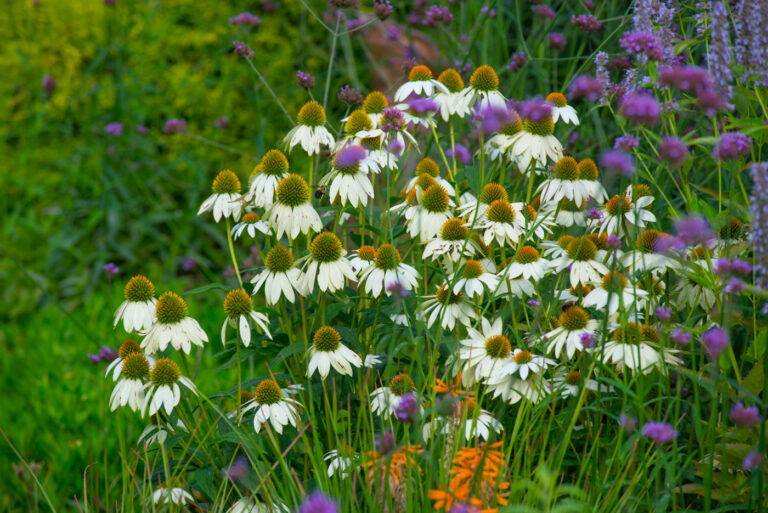
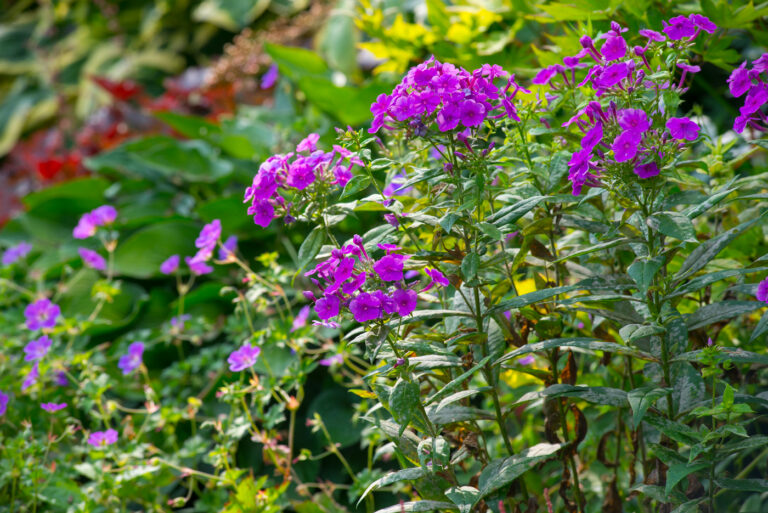
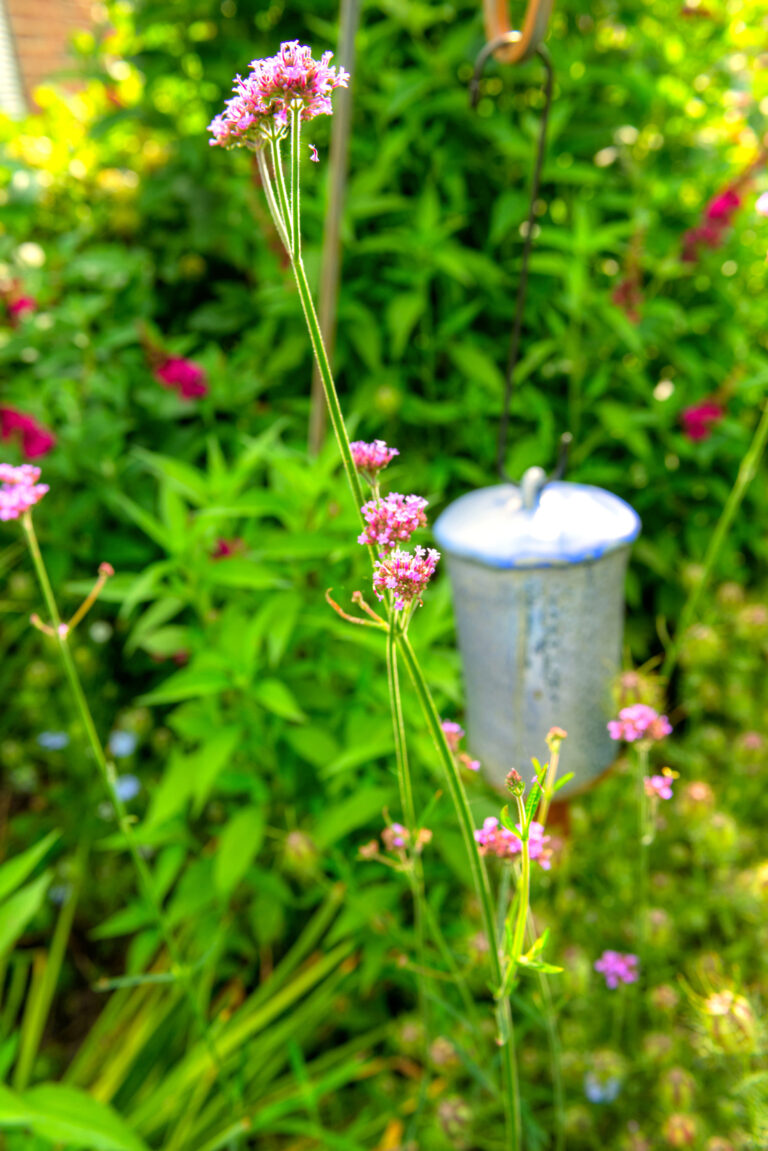
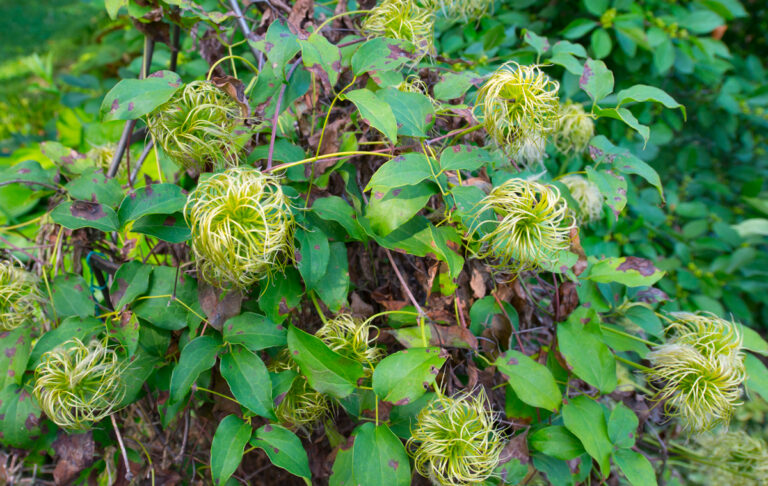
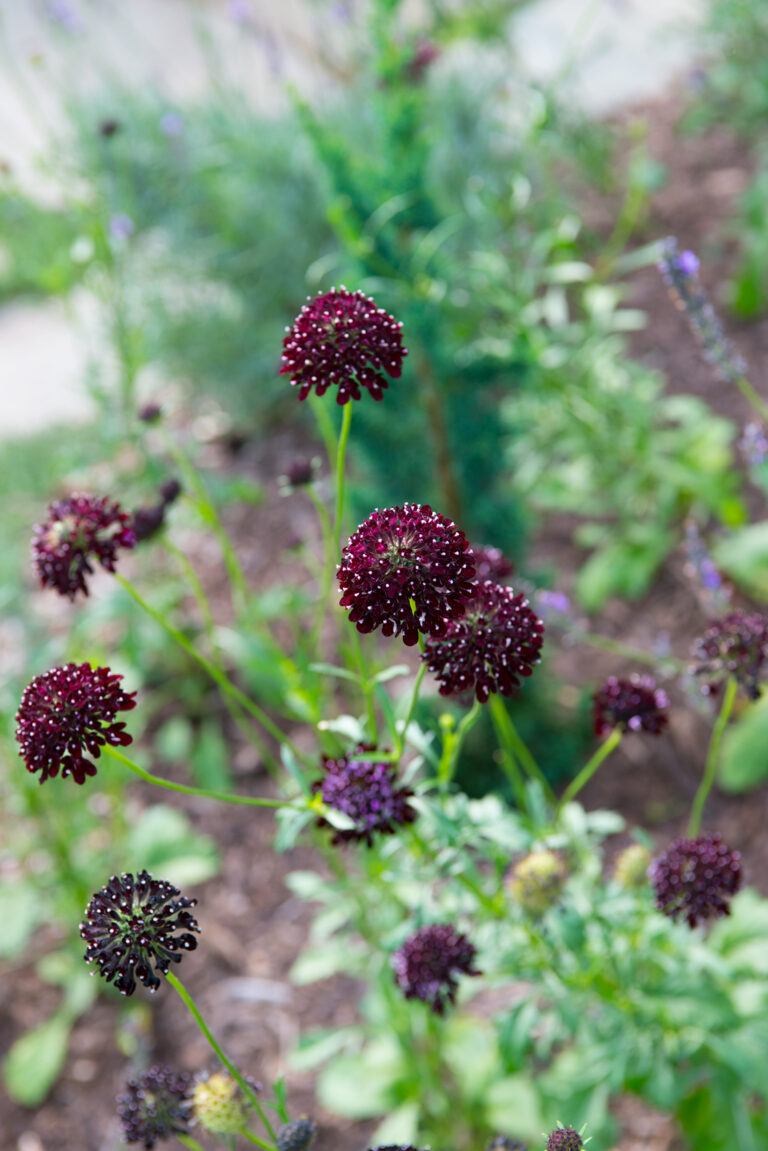
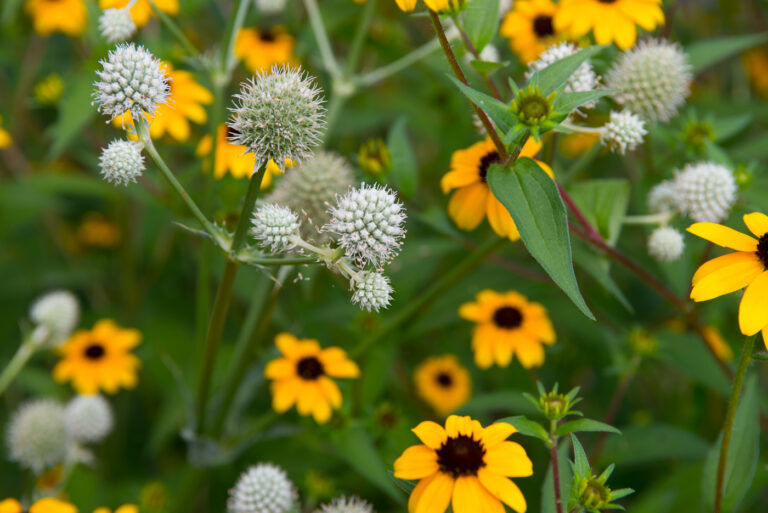
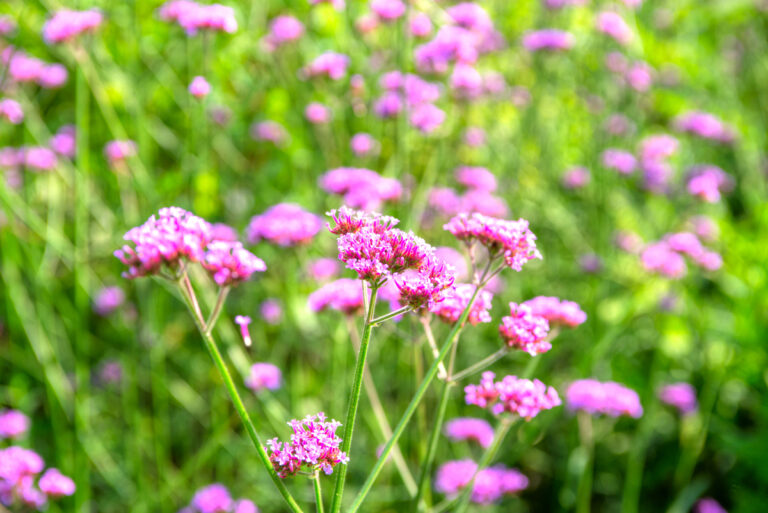
Leave a Reply